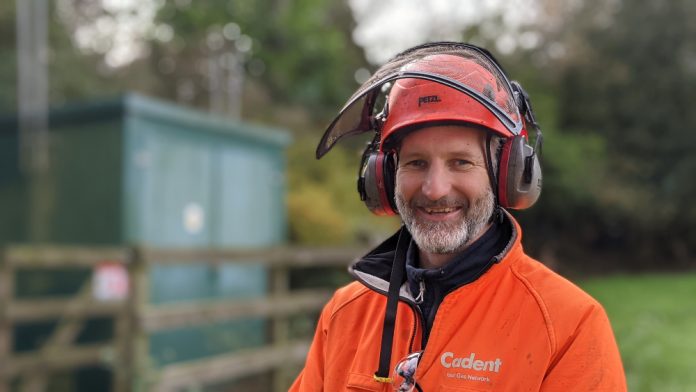Our West Midlands network covers a very wide area, from Staffordshire in the north to Herefordshire in the south, to the M1 in the east and the Welsh border in the west. From some of the UK’s most densely populated areas to remote countryside.
We manage gas pressure for this network through 1,776 district governors. These are sometimes in prominent places next to busy roads, but can also be hidden in forests. The control units that manage the pressures at which gas is safely transported within a local area are located in small kiosk buildings.
Urban or rural, these buildings and their immediate surroundings can host an abundance of vegetation and living things – food and / or home for birds, hedgehogs, frogs, toads, bees, butterflies, moths, and more.
Until recently, not much thought has been given to how we can successfully maintain safe and effective operations with the least possible impact on the site’s ecosystem.
For example, our previous contractors’ approach to grass maintenance was to come over six times a year, mow and cut everything back. Think about it for a moment – did you use a gasoline mower six times a year and for what purpose? Think about the work, the fuel, the green waste that arises from it.
Breaking out of the office environment
Cadent decided to improve his game.

When I saw the job advertisement for the site manager, she spoke to me immediately. Joining a company that is not only committed to complying with ISO 14001 environmental standards, but also has long-term plans to keep improving and helping others on their journey.
For example, many companies use recycled toilet paper and switch detergents – but that doesn’t really break out of the office environment. At Cadent, we work a lot harder.
As part of our RIIO-2 commitments, we launched our Environmental Action Plan. This includes an action to develop and implement a plan to improve key sites.
Over the next five years we will work in partnership with other organizations to improve the habitats in the areas associated with our activities in order to generate a net habitat gain.
We have launched a program of surveys to map and assess our land holdings using the Defra Biodiversity Metric and to develop action plans. We are working with The Wildlife Trusts to achieve the biodiversity benchmark at five flagship locations.
We also give responsibility to our suppliers by asking them to offer us products and services that take the environment into account, which in turn increases their environmental friendliness. From then on it goes on and on. Before you know it, let’s improve our game together.
Because it can be done.

You don’t have to “cut everything back”
Some of the changes we’ve made to the West Midlands Network have been simple but incredibly effective. If you weren’t immersed in the horticultural and environmental industries like me, you probably wouldn’t have thought of it.
Contrary to belief – and previous practice – you don’t have to “cut everything back”. It’s about managing the websites and training our brain to think differently. We don’t manage back gardens; These are operating locations. Take a step back and you will appreciate that there is beauty and good demeanor in what some find messy. Well managed, wild and overgrown can be a very good thing.

We have reduced the frequency of pruning and mowing and are instead looking into options to help “rewild” our sites.
For example, we get a lot of ivy and it can cause problems. But not everything has to be cut away. If managed well, it can grow on deteriorating wooden fence structures and solidify them. Over time, it becomes a natural, free-standing construction that outlasts the fence elements and forms a natural barrier. A plus point: it is resistant to graffiti. It shields the object and offers protection for insects, birds, bats and small mammals. It is also a late season source of nectar for butterflies, wasps, and bees, while winter berries are a food source for songbirds.
In many locations it is advisable to create wildflower meadows. It looks lovely, appeals to the public, and it’s species-rich grasslands that can feed many creatures.
We’re introducing bird boxes where we can, and I speak to wildlife rescue groups as I think some of our locations are perfect as release sites for animals – like hedgehogs – to return to the wild.

Anything we reduce we want to leave on site or take to a nearby location to create perfect habitats for beetles, birds and other wild animals. We first see whether we really need to remove it from the construction site or whether it can stay. If it has to go, then what is around that can take it up? – instead of a three-quarters hour drive back to a depot to empty it into a container.
In order to achieve the effect that we need to have, this is much more than just ticking the box. We have to challenge ourselves. Over the past year we have built the evidence that this is possible.

See this content come to life at Utility Week Live May 17-18, 2022 NEC Birmingham
The decarbonization of heat and new approaches to asset management and maintenance are among the central challenges at the center of the live content program of Utility Week Live 2022.
Watch the challenges and get tickets to the highly anticipated industry reunion at Utilityweeklive.co.uk

